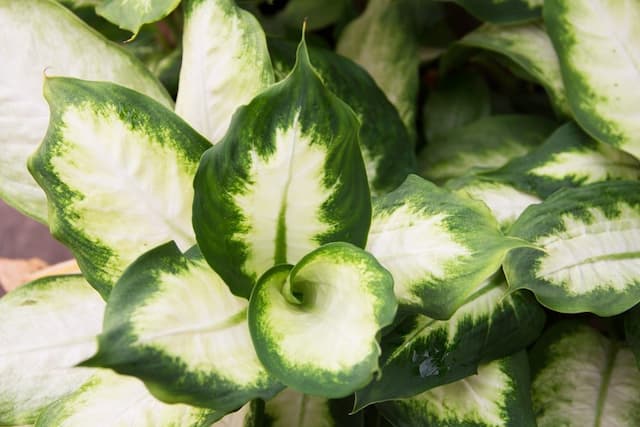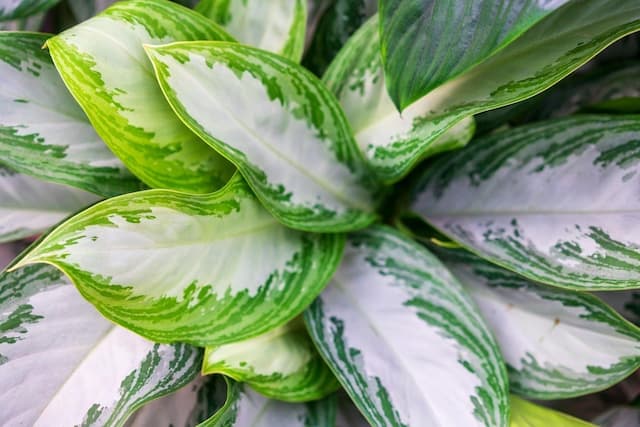Painter's-palette Anthurium andraeanum



ABOUT
Painter's-palette is an herbaceous evergreen plant that grows up to 16 inches tall. The dark green leaves are heart-shaped and glossy. The inflorescence consists of a yellow tailed spadix and a waxy red leaf.
Combined with its frequent flowering and resistance to partial shade, Painter's-palette is a popular houseplant.
Flowering continues throughout the year round.
A winner of the Royal Horticultural Society's Award of Garden Merit.
Painter's-palette lives from 5 to 10 years when grown, but if divided into offshoots, it lives for decades.
Because the anthurium requires little care and blooms within a few months, it is an excellent choice for beginner growers.
A colorful leaf that looks like a flower is not a flower. Although it looks like a waxy flower, it is actually a spadix, or leaf. Its function is to protect the spadix, which contains several tiny flowers during flowering. The spadix can be different colors, such as pink, orange, and white.
About this plant
 Names
NamesFamily
Araceae
Synonyms
Flamingo Flower, Tailflower, Laceleaf, Flamingo Lily, Anthurium, Oilcloth Flower, Laceleaf
Common names
Anthurium venustum
 Toxicity
ToxicityTo humans
All parts of Painter's-palette are poisonous and toxic to all mammals. It contains saponins and calcium oxalate crystals, in the form of thin needles that can penetrate mucous membranes and cause painful irritations.
A chewed fragment can cause severe irritation of the mouth and throat.
Contact with humans causes erythema, blisters, and if swallowed, salivation, difficulty swallowing, and vomiting.To pets
Keep Painter's-palette out of the reach of pets. Because of its toxic properties, which may irritate the mouth, throat and intestinal tract.
 Characteristics
CharacteristicsLife cycle
Perennials
Foliage type
Evergreen
Color of leaves
Green
Flower color
Red, pink, orange, white
Height
16 inches
Spread
16 inches
Plant type
Herb
Hardiness zones
10
Native area
Colombia and Ecuador
Benefits
 General Benefits
General BenefitsVery decorative plant;
It's an great indoor air purifier listed in the NASA Clean Air Study;
Strict and elegant flowers do not lose their attractiveness for a long time in a cut. Air-purifying Qualities
Air-purifying QualitiesPainter's-palette is one of the plants listed in the NASA Clean Air Study as effective for removing formaldehyde, xylene, toluene and ammonia from the air.
Interesting Facts
 Feng Shui
Feng ShuiAccording to Feng Shui, Painter's-palette brings good luck in your relationships.
 Zodiac Sign Compitability
Zodiac Sign CompitabilityCANCER
Cancer is ruled by the Moon, and like lunar phases, the mood of this sign can fluctuate. The Anthurium, or Painter's-pallette, also fluctuates in bloom throughout the year.
The plant brings Cancer good luck and helps to set a positive mood. Plant Symbolism
Plant SymbolismPainter's-pallets symbolize hospitality. Because of their open shape, heart shape and longevity, they are popular as hostess or hospitality gifts.
 Water
WaterPainter's-pallets require constantly moist soil. Throughout the growing season, water when the soil surface becomes dry to the touch. Typically, water once every 2 to 3 days.
In winter, water less frequently, but the soil should not be allowed to dry out completely.
Also, make sure the container you are using has excellent drainage. Anthuriums cannot tolerate overwatering of the roots. Light
LightPainter's-pallets do best in bright, diffused light.
During the growth and flowering period (spring to late summer), a window facing south or west is best. In summer, the plant should be shaded to avoid sunburn.
In winter, a window facing east is suitable.
With moderate light, you will not achieve blooming, however, the plant will be healthy. Temperature
TemperaturePainter's-pallet is a heat-loving plant, and likes temperature of about 70-77°F.
During the winter, if possible, it should be kept in a cool environment at around 63°F for 1.5 to 3 months to give it the strength it needs to flower abundantly. Pruning
PruningPruning may be necessary if the plant you bought is not feeling well. In this case, remove all the flowers to leave the plant with the strength to develop properly and adapt to new conditions. Also, the plant may need sanitary pruning. Old and diseased leaves are cut back with a sterile tool. And also remove the blooms that have bloomed with twisting motions at their base as needed.
 Cleaning
CleaningOnce a month
 Soil
SoilA coarse-fibrous mixture of leafy soil, sphagnum and light sod. The presence of large pieces of pine bark in the substrate is prefered.
The soil should easily let air and water to the roots of the plant.
To improve drainage perlite and a small amount of charcoal need to be added to the soil. Repotting
RepottingThe best time for transplanting is spring. Transplant the plant into a larger pot with larger drainage holes as needed.
For planting, you need to use a pot that will be 1,5 inches larger in diameter than the previous one. If planted in a too large pot, the plant will suspend growth of the above-ground part until the root system has mastered the entire volume of the container.
After transplanting, watering should be stopped for 3 to 5 days to give the root system time to adapt to the new soil. It is also necessary to stop watering so that any root wounds that may have appeared during transplanting can heal. Humidity & Misting
Humidity & MistingPainter's-pallets need very humid conditions. A humidifier is the best option. But you can also put the plant on a tray of damp pebbles or put damp sphagnum moss on top of the soil to increase the humidity.
If the air is too dry, the edges of the leaves will start to dry out and the plant will start to get sick.
The air humidity should be over 50%. Suitable locations
Suitable locationsIndoor
All year round
Outdoor
Does not like temperature changes, so if you live outside the Painter's-pallets' natural habitat, the plant is not desirable to be outside.
Hardiness zone
10 - 12 USDA
 Life cycle
Life cyclePainter's-pallets are growing all the time. Although the life span of a single specimen is a maximum of 10 years, it multiplies constantly and can live for decades with proper care.
The first flowering of a young plant comes after only 1 year. Flowering is possible all year round. Propogation
PropogationPropogation time
Spring
The fastest and easiest way to propagate Painter's-pallet is by cuttings.
Cuttings are separated from the adult plant. The cuttings are treated with shortening powder and placed in soil. Cover the young plants with cling film or glass to create a greenhouse effect and place the containers in a bright warm place, but without direct sunlight.
With the right conditions and successful rooting, new leaves will appear after about 2 months.
 Pests
PestsSpider mite, Diaspididae, Coccidae, Thrips, Aphid









